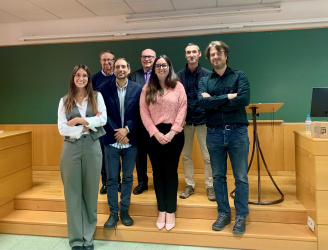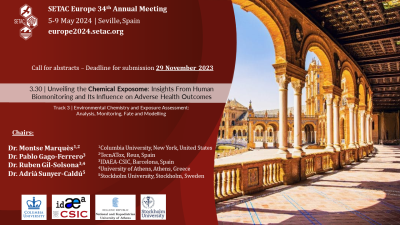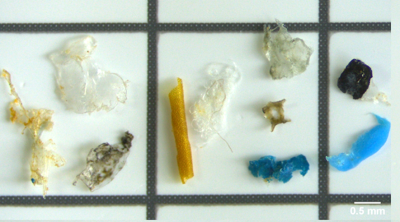News

In October 26, our colleague Marta Herrero defender her PhD thesis, entitled Exposure to chemicals through textiles: Health risk assessment and supervised by Dr. Joaquim Rovira and Dr. Martí Nadal. The thesis was awarded with an overall classification of excellent and the cum laude distinction.
The thesis is the final outcome of the EarlyCLOTHES project, funded by the Spanish Ministry of Science, Innovation and Universities (PID2019-104443GB-I00).
Congratulations to Dr. Marta Herrero!
Posted on 27-10-2023

The Erasmus + Project “DISCERN-A customised Digital Space to Foster Circular Economy Entrepreneurship with SMEs” has released the fifth newsletter. We invite you to read it in Spanish or English by clicking on this news.
Posted on 25-10-2023

The report includes a double analysis: on one hand, it takes into account the activity of the last year (citations received in 2022) and, on the other, data from the entire academic career (citations received until 2022). In the first case, the 2 former co-Directors of TecnATox, Prof. José Luis Domingo and Prof. Marta Schuhmacher, were ranked in the 1st and 16th positions. Additionally, Prof. Mònica Bulló, current co-director of our institution was also included as the 14th most influential researcher according to the number of accumulated citations in 2022
Furthermore, all of them were also included in the ranking according to the number of citations received in 2022, a list which also adds Dr. Montse Marquès, co-director of TecnATox and current Marie Curie Research Fellow at Columbia University (New York).
As abovementioned, TecnATox is the URV technological center with the highest rate of researchers: 4 in the fist list and 5 in the second one, as Dr. Martí Nadal has been also ranked there (21st and 15th, respectively)
The conclusion is clear: the fact that not only the former co-directors of TecnATox but also the current ones are in the databases of standardized citation indicators is a clear indication that TecnATox future is in good hands.
Posted on 20-10-2023

Nerea Carrión and David Mateo, postgraduate students of TecnATox, presented their posters at the 10th Annual World Meeting on Targeting Microbiota between October 17-19 in Venice, Italy. Hosted by the International Society of Microbiota, the event has covered the latest breakthroughs in this evolving and fascinating field.
Both Nerea and David conduct their research in the framework of the official project entitled DEM-BIOTA (DEMentias and microBIOTA composition: Microbiota in dementias. Is possible to revert the dementia symptoms reverting the microbiota composition?), which is led by their PhD supervisor Dr. Marga Torrente.Posted on 19-10-2023

Dr. Montse Marquès will be chairing the session entitled “Unveiling the chemical exposure: Insights from human biomonitoring and its influence on adverse health outcomes” announced within Track 3 “Environmental Chemistry and Exposure Assessment: Analysis, Monitoring, Fate and Modelling” at the SETAC Europe 34th Annual Meeting. We encourage all exposome enthusiasts to submit an abstract before 29 November 2023.
We hope to see you in Seville from 5 to 9 May 2024!
Posted on 13-10-2023

Pollution by microplastics is a global environmental problem, present in all natural ecosystems (water, soil and air) and which concerns not only the scientific community, but also society in general. Microplastics are non-biodegradable synthetic particles with a diameter of less than 5 mm, which can enter natural ecosystems in several ways, one of the main ways being water treatment plants.
More information from this study can be found at the following scientific paper:
TV3, the Catalan public television, echoed this news at TN Comarques: https://www.ccma.cat/tv3/alacarta/telenoticies-comarques/un-estudi-de-la-urv-questiona-el-tractament-dels-microplastics-a-les-depuradores/video/6244264/
Posted on 10-10-2023





